8 Great Dividend Stocks You Never Heard Of
When you think of mighty dividend payers, some usual suspects may come to mind: Coca-Cola, Johnson & Johnson, McDonald’s, to name a few.

When you think of mighty dividend payers, some usual suspects may come to mind: Coca-Cola, Johnson & Johnson, McDonald’s, to name a few. These companies are considered Dividend Aristocrats, members of Standard & Poor’s 500-stock index that have increased their payout every year for at least the past quarter-century.
But the list of dividend-raisers goes well beyond household names. In fact, even within the group of Aristocrats, you may not recognize some companies. “A lot of them probably get overlooked because they’re just sort of boring,” says Sam Stovall, chief equity strategist for S&P Capital IQ’s stock research group. Plenty of firms outside the S&P 500 have also regularly increased dividends for a decade or more.
By adding a few of these dividend unknowns to your portfolio, you may get better diversification, in addition to new sources of dividend growth. The following eight stocks boast yields that are close to or greater than the S&P 500’s 2.0% yield. Each of the companies has raised its dividend every year for the past 20 years or more. And the outlook for their businesses is bright, helping increase the likelihood that these companies can boost their dividends for years to come. The stocks are listed in alphabetical order.
Disclaimer
Prices, returns and related data are through August 22. Source: Thomson Reuters
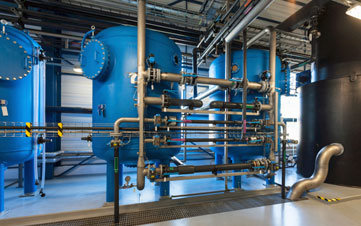
Aqua America
- Headquarters: Bryn Mawr, Pa.Share price: $24.37Market capitalization: $4.3 billionDividend yield: 2.7%Years of consecutive dividend increases: 23
It may not be surprising to find a utility on a list of dividend payers. But Aqua America (WTR), a holding company for water and wastewater utilities, stands out for its potential to keep raising its payout.
Aqua America already serves nearly 3 million people in eight states, including North Carolina, Ohio and Pennsylvania. But with close to 53,000 water systems in the U.S., expansion opportunities abound. In 2013, Aqua America bought 15 operations, and so far this year it has completed another eight acquisitions.
The purchases are helping pump up earnings, which increased at a strong annualized rate of 15% from 2009 through 2013. In addition, Aqua America plans to spend roughly $1 billion on system upgrades from now through 2016, much of which will be paid for by state-approved surcharges and rate increases. That should bolster earnings, according to a report from Robert W. Baird, a Milwaukee-based investment firm. It will also help fuel dividend growth. Aqua America lifted its payout by 9% earlier this year, and over the past decade, it has boosted the dividend by an average of 8% per year.
The stock has returned just 5.3% so far this year, compared with 9.0% for the S&P 500. Aqua America looks pricey, trading at 20 times forecasted earnings for the next 12 months. But that’s slightly below its average forward price-earnings ratio of 21 for the past five years.

BD (Becton, Dickinson)
- Headquarters: Franklin Lakes, N.J.Share price: $116.97Market capitalization: $22.4 billionDividend yield: 1.9%Years of consecutive dividend increases: 42
- BD (Becton, Dickinson) (BDX) makes syringes, IV catheters and other run-of-the-mill medical supplies that most of us barely notice. But these tools are health care essentials, and the 117-year-old company continues to find sources of growth. The biggest driver: overseas sales. BD now has operations in more than 50 countries, with about 60% of sales coming from abroad. And in the company’s latest quarterly statement, overseas revenues increased 6% (adjusted for currency fluctuations) from the same period a year earlier. U.S. revenues rose only 2.8%.
Based on the strength of BD’s foreign operations, analysts believe earnings will rise 9% in both 2015 and 2016. That should provide ample space to increase the dividend, which currently accounts for only 35% of estimated 2014 earnings. Indeed, over the past five years, BD has ratcheted up its dividend at an average rate of 11% annually. That growth rate may justify a higher P/E than its competitors have. The stock, which has gained 6.9% so far this year, trades at 18 times estimated year-ahead earnings, compared with 17 for the average health care company in the S&P 500.
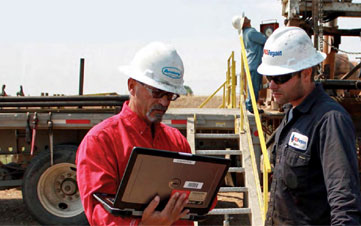
Dover
- Headquarters: Downers Grove, Ill.Share price: $88.88Market capitalization: $14.8 billionDividend yield: 1.8%Years of consecutive dividend increases: 59
- Dover (DOV) produces industrial components that consumers rarely encounter, such as oil and gas drilling equipment and plastic tube connectors. But the manufacturer, which has consistently hiked its dividend for more than half a century, is worth getting to know. Case in point: Despite the global economy’s uneven growth so far in 2014, Dover’s sales are improving. Orders across the firm’s four main segments—energy, engineered systems, fluids, and refrigeration and food equipment—have been strong, climbing by an average of 8% in the first six months of 2014 from the same period the year before. “Dover’s results stand out,” writes Nicholas Heymann, an analyst at William Blair, a Chicago-based investment bank.
Meanwhile, the company continues to raise its dividend at a healthy clip. Over the past five years, the payout has moved up at an annualized rate of 9%. Dover’s stock trades at 17 times estimated year-ahead earnings, a slight premium to the average industrial-stock P/E of 16. But analysts expect Dover’s earnings to rise 12% next year, compared with 11% for its average competitor. So far this year, the stock has returned 11.9%.
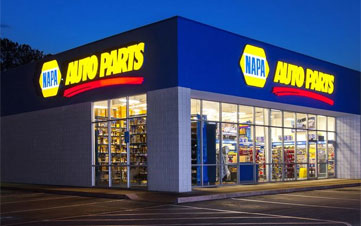
Genuine Parts Company
- Headquarters: AtlantaShare price: $87.85Market capitalization: $13.4 billionDividend yield: 2.6%Years of consecutive dividend increases: 58
During the recession, Genuine Parts (GPC) survived better than most. That’s because the company’s main business segment is the wholesale distribution of car replacement parts through NAPA auto stores, and during tough economic times consumers often opt to repair old cars rather than buy new ones. So although Genuine Parts’ earnings fell in both 2008 and 2009, they did not collapse. The stock lost only 16.3% in 2008, much better than the S&P 500’s plunge of 37%.
Since then, Genuine Parts’ results have improved steadily. Sales in the first half of 2014 for the entire company, which includes Genuine Parts’ three other business lines—wholesale distribution of electrical materials, industrial replacement parts and office supplies—rose 10% from the same period the year before. The company’s S.P. Richards subsidiary was named as the primary wholesaler for the newly merged Office Depot and OfficeMax stores. And Genuine Parts is expanding overseas as well. Last year, it bought Exego Group (now GPC Asia Pacific), an auto-parts distributor in Australia.
All of that has made it possible for the company to continue to increase its dividend, this year by 7%. The stock trades at 18 times estimated year-ahead earnings, on par with the average for its sector (companies that make non-essential consumer goods).
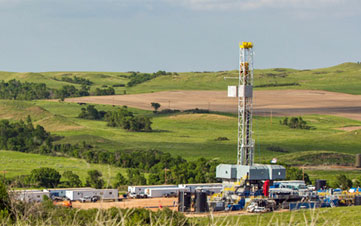
Helmerich & Payne
- Headquarters: TulsaShare price: $99.88Market capitalization: $10.8 billionDividend yield: 2.8%Years of consecutive dividend increases: 42
Much of the boom in U.S. energy depends on horizontal drilling. And Helmerich & Payne (HP), the largest land-drilling contractor in the U.S., is one of the best at doing it. In 2013, it won 55% of all new rig contracts. Orders have continued to pour in this year, and analysts estimate that earnings will surge 18% in 2015, after an expected gain of 12% in 2014. Year-to-date, the stock has jumped 21.1%.
Rig deals often carry long-term contracts with steady revenues—perfect for financing dividends. Since December 2012, H&P’s payout has soared 882%. A repeat over the next few years is unlikely. But according to a report by FBR & Co., an Arlington, Va.-based investment bank, “management has a clear preference for returning excess capital via a dividend.” H&P shares aren’t particularly expensive. They trade at 14 times estimated year-ahead profits, about the same as the average P/E for energy stocks and below the overall stock market’s P/E.
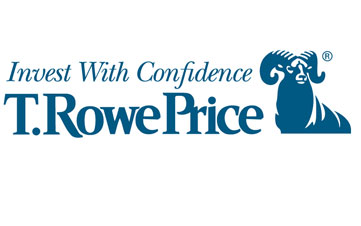
T. Rowe Price
- Headquarters: BaltimoreShare price: $79.69Market capitalization: $21 billionDividend yield: 2.2%Years of consecutive dividend increases: 28
Okay, if you’re a regular Kiplinger’s reader, you’ve probably heard of mutual fund giant T. Rowe Price (TROW), which has more than $730 billion in assets under management. But you may not think of Price as the steady dividend raiser that it is. The company has hiked its payout each year for more than a quarter of a century, including an increase of 16% in 2014.
The stock has performed poorly this year, losing 3.8% and trailing the S&P 500 by 12.8 percentage points. One reason: Overseas institutional clients and some domestic advisers have been pulling money out of Price funds. In 2013, for example, investors withdrew $12 billion more from Price funds than they added. The pattern continued in the first half of 2014.
But Price has a large and growing retirement-account business. As of 2013, T. Rowe was the third-largest provider in the U.S. of target-date funds, which own a mix of investments appropriate for a set retirement year. Target-date dollars are more likely to stay put than money invested in other kinds of investment accounts, says Keefe, Bruyette & Woods, a New York City-based investment bank that specializes in financial stocks. That should help drive steady earnings growth, which analysts see climbing 18% this year and 10% in 2015. Price also has zero debt and ample cash to raise the dividend. At 17 times projected year-ahead profits, Price shares sell well below the average forward P/E of 19 for the past five years.
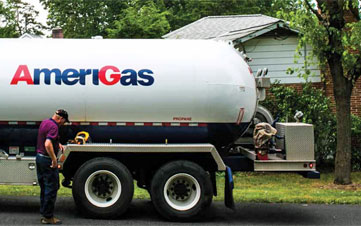
UGI Corporation
- Headquarters: King of Prussia, Pa.Share price: $51.94Market capitalization: $6 billionDividend yield: 2.3%Years of consecutive dividend increases: 27
Low natural gas prices have been a headwind for some utilities, but not UGI (UGI). One reason is that the holding company has a diversified business: It owns U.S. and European propane gas distributors, natural gas utilities, gas pipelines and storage facilities. The company has also been growing through acquisitions. In 2012, AmeriGas, a partial subsidiary of UGI, bought Heritage Propane, which increased the number of customers AmeriGas serves from 1.3 million to more than 2 million. And in July, UGI announced that it would purchase the liquid petroleum gas business of France’s Total. If the deal goes through, UGI’s share of business in France will essentially double.
The growth is helping push up earnings. Carl Kirst, an analyst at BMO Capital Markets, a Toronto-based bank, believes the deal with Total could boost earnings by 25 cents per share in the first full fiscal year after the purchase is complete. Long-term, the amount could rise to as much as 50 cents per share, thanks to additional cost savings. For the fiscal year that ends in September 2015, analysts predict that UGI will earn $2.94 per share.
Meanwhile, UGI is returning cash to shareholders. The company’s goal is to raise the dividend 4% annually. But it outdid itself in late July when it announced a boost of 10%. UGI’s stock is having a terrific year, with a return of 26.7%. It trades at 18 times estimated earnings for the fiscal year that ends in September 2015. That compares with 15 for the average utility stock.

V.F. Corporation
- Headquarters: Greensboro, N.C.Share price: $63.87Market capitalization: $27.5 billionDividend yield: 1.6%Years of consecutive dividend increases: 41
You may have never heard of V.F. Corporation (VFC), but you probably wear some of its products. The apparel manufacturer owns more than 30 brands, including The North Face, Timberland and Wrangler. Lately, the company has benefited from rising consumer demand for activewear. In fact, sales of activewear were up 9% across the industry last year, compared with 2% for the total apparel market, according to the NPD Group, which tracks consumer trends. (Raise your hand if you’ve worn yoga pants or a running jacket to the grocery store.)
With its top activewear brands, VF is doing a good job of riding the trend. Revenues in the second quarter were up 8% from the same quarter the year before, and earnings per share were up 16%. VF’s global reach is also an advantage. A little more than one-third of the company’s sales come from overseas. In the latest quarter, international sales grew 14%.
The momentum is likely to continue. Analysts expect VF’s earnings to expand 14% this year and 13% next year. That may enable the company to continue to deliver impressive dividend increases (it boosted the payout by 21% last year). After soaring 68% last year, VF shares are essentially flat so far in 2014. But the breather may be a good thing: The stock trades at 20 times forecasted year-ahead earnings, compared with 18 for the average company that makes non-essential consumer goods.

More from Kiplinger
- Headquarters: Greensboro, N.C.Share price: $63.87Market capitalization: $27.5 billionDividend yield: 1.6%Years of consecutive dividend increases: 41
You may have never heard of V.F. Corporation (VFC), but you probably wear some of its products. The apparel manufacturer owns more than 30 brands, including The North Face, Timberland and Wrangler. Lately, the company has benefited from rising consumer demand for activewear. In fact, sales of activewear were up 9% across the industry last year, compared with 2% for the total apparel market, according to the NPD Group, which tracks consumer trends. (Raise your hand if you’ve worn yoga pants or a running jacket to the grocery store.)
With its top activewear brands, VF is doing a good job of riding the trend. Revenues in the second quarter were up 8% from the same quarter the year before, and earnings per share were up 16%. VF’s global reach is also an advantage. A little more than one-third of the company’s sales come from overseas. In the latest quarter, international sales grew 14%.
The momentum is likely to continue. Analysts expect VF’s earnings to expand 14% this year and 13% next year. That may enable the company to continue to deliver impressive dividend increases (it boosted the payout by 21% last year). After soaring 68% last year, VF shares are essentially flat so far in 2014. But the breather may be a good thing: The stock trades at 20 times forecasted year-ahead earnings, compared with 18 for the average company that makes non-essential consumer goods.
Get Kiplinger Today newsletter — free
Profit and prosper with the best of Kiplinger's advice on investing, taxes, retirement, personal finance and much more. Delivered daily. Enter your email in the box and click Sign Me Up.
-
 6 Stunning Waterfront Homes for Sale Around the US
6 Stunning Waterfront Homes for Sale Around the USFrom private peninsulas to lakes, bayous and beyond, Kiplinger's "Listed" series brings you another selection of dream homes for sale on the waterfront.
By Charlotte Gorbold Published
-
 Six Reasons to Disinherit Someone and How to Do It
Six Reasons to Disinherit Someone and How to Do ItWhether you're navigating a second marriage, dealing with an estranged relative or leaving your assets to charity, there are reasons to disinherit someone. Here's how.
By Donna LeValley Published
-
 Stock Market Today: Stocks Surge to Close a Volatile Week
Stock Market Today: Stocks Surge to Close a Volatile WeekIt was another day with a week's worth of both news and price action, but it ended on a strongly positive note.
By David Dittman Published
-
 Stock Market Today: Uncertainty Proliferates: Dow Loses 1,014 Points
Stock Market Today: Uncertainty Proliferates: Dow Loses 1,014 PointsWeaker-than-expected consumer inflation data wasn't enough to stabilize sentiment during another volatile day for financial markets.
By David Dittman Published
-
 Stock Market Today: Tariff Pause Triggers 3,000-Point Dow Rally
Stock Market Today: Tariff Pause Triggers 3,000-Point Dow RallyThe bond market is sending concerning signals as the Trump administration executes its rapid reordering of global trade relationships.
By David Dittman Published
-
 Stock Market Today: Tariff Talks Drive Another Up-and-Down Day
Stock Market Today: Tariff Talks Drive Another Up-and-Down DayTrade war negotiations are happening, but the "fear gauge" is gyrating, and investors, traders and speculators are still searching for signs of a bottom.
By David Dittman Published
-
 Stock Market Today: Trump Pushes Dow Into 2,600-Point Swing
Stock Market Today: Trump Pushes Dow Into 2,600-Point SwingTariffs and trade war weigh on prices across global financial markets, with little light at the end of the tunnel.
By David Dittman Published
-
 Stock Market Today: Dow Drops Another 2,231 Points to Hit a Correction
Stock Market Today: Dow Drops Another 2,231 Points to Hit a CorrectionThe Nasdaq Composite, meanwhile, entered a new bear market with its latest slide.
By Karee Venema Published
-
 Stock Market Today: Dow Dives 1,679 Points on Trump Tariff Shock
Stock Market Today: Dow Dives 1,679 Points on Trump Tariff ShockU.S. stocks lost roughly $3.1 trillion in market cap on Thursday – the biggest one-day decline since the start of the COVID-19 pandemic in March 2020.
By Karee Venema Published
-
 Stock Market Today: It's the Old Up-Down Again on Liberation Day
Stock Market Today: It's the Old Up-Down Again on Liberation DayMarkets look forward to what comes with the reordering of 80-year-old global trade relationships.
By David Dittman Published
